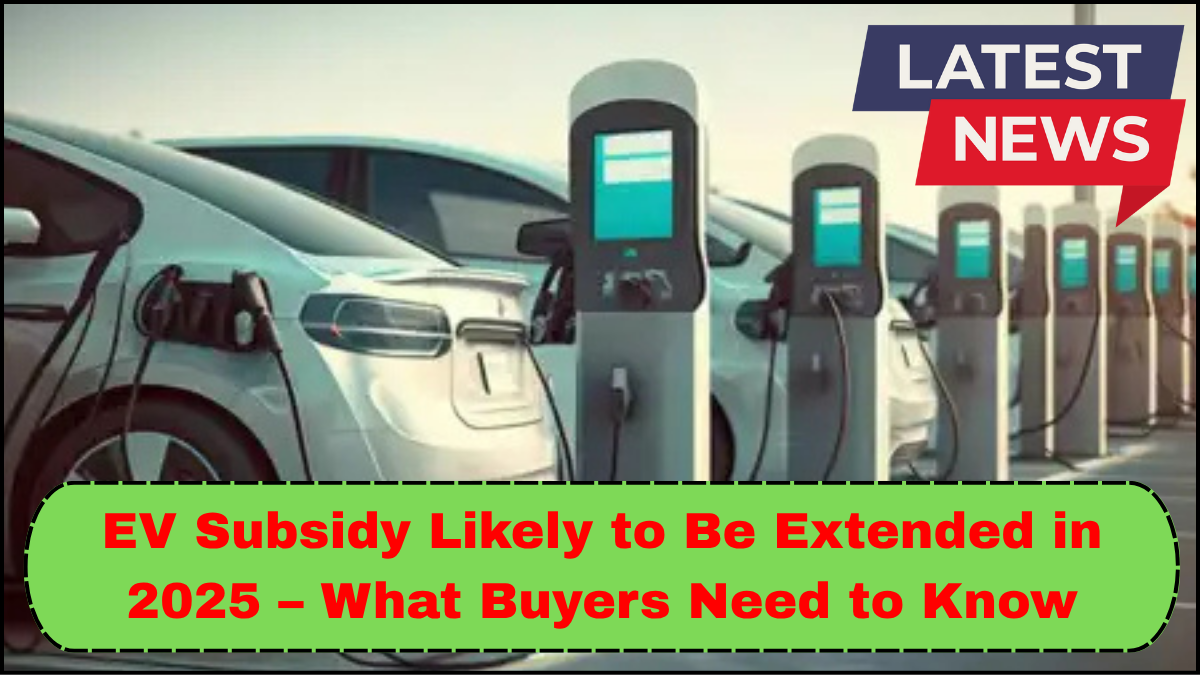The Indian government appears poised to extend its Electric Vehicle (EV) subsidy scheme into 2025, signaling ongoing support for clean mobility. For prospective buyers and industry players alike, this potential extension could offer substantial incentives, especially as the nation gears up for the next phase of the FAME initiative.

What Is the EV Subsidy Scheme in India?
India’s EV subsidy scheme, primarily governed under the Faster Adoption and Manufacturing of Hybrid and Electric Vehicles (FAME) program, was launched to accelerate the transition to electric mobility. With its current phase (FAME II) nearing completion, the government is now drafting FAME 3 to continue promoting electric vehicles, particularly in the two-wheeler (2W) and four-wheeler (4W) segments.
FAME 3 Policy Draft in Focus
As of mid-2025, the FAME 3 policy draft is under review, and sources suggest it will introduce upgraded incentives to drive deeper EV adoption. The draft reportedly includes:
- Broader inclusion of vehicles, such as commercial electric buses and light electric trucks.
- Recalibrated subsidy slabs based on battery capacity and range.
- Higher allocations for 2W and 4W benefits to attract more retail buyers.
Unlike FAME II, which focused heavily on public transport and fleet electrification, FAME 3 is expected to cater more evenly to individual consumers and shared mobility solutions.
Why the EV Subsidy Scheme Is Being Extended
There are several strategic reasons for extending the EV subsidy scheme in India:
- Market Maturity: While EV adoption has grown, the market is not yet self-sustaining without incentives.
- Emission Goals: India has pledged to reduce carbon emissions significantly under its climate commitments.
- Energy Security: Promoting EVs reduces dependency on imported oil, improving national energy resilience.
- Manufacturing Boost: Continued subsidies encourage local production, supporting the ‘Make in India’ initiative.
Key Benefits for Buyers in 2025
If the EV subsidy scheme is extended, individual buyers in 2025 stand to gain significantly. Here’s what it could mean:
Reduced Upfront Costs
EVs are generally more expensive than ICE vehicles due to battery costs. Subsidies under the FAME 3 policy draft will likely bring the effective prices down, especially for 2W and 4W categories.
Tax and Registration Perks
Many state governments offer exemptions or reductions in road tax and registration fees for EVs. These may continue or expand under the new scheme.
Broader EV Options
With increased demand due to subsidies, manufacturers are expected to release more affordable and feature-rich models across various price points.
Charging Infrastructure Support
The FAME 3 initiative is also likely to emphasize the rollout of more public and residential charging stations, addressing a key pain point for EV adoption.
What to Watch Before You Buy
Before committing to an EV purchase in 2025, consider the following:
- Subsidy Eligibility: Only models approved under the scheme qualify. Check for updates on eligible vehicles.
- Battery Specs: Subsidies might vary based on battery size and range.
- State Incentives: Some states offer additional benefits over and above the central scheme.
- Policy Timelines: Monitor the final approval and implementation date of FAME 3 to time your purchase for maximum benefit.
Final Thoughts
The likelihood of the EV subsidy scheme being extended in India through 2025 is a strong signal of the government’s commitment to cleaner transportation. For buyers, this translates to continued affordability, growing options, and enhanced infrastructure support. Whether you’re eyeing an electric scooter or a family EV, 2025 could be the right year to switch.
FAQs
Q1. What is the FAME scheme?
The FAME (Faster Adoption and Manufacturing of Hybrid and Electric Vehicles) scheme is a government initiative to support electric vehicle adoption through subsidies and infrastructure development.
Q2. What is the difference between FAME II and FAME 3?
FAME II focused on fleet and commercial electrification, while FAME 3 aims to increase benefits for individual buyers and expand eligibility across vehicle types.
Q3. Who qualifies for the EV subsidy in India?
Buyers of EV models approved under the scheme, including certain 2Ws, 3Ws, 4Ws, and commercial vehicles, qualify for the subsidy.
Q4. Will state-level EV incentives also continue in 2025?
While the central government is expected to extend FAME, individual state policies may vary. Many states are likely to align their incentives with the updated national scheme.
Q5. Are EV subsidies applicable for used electric vehicles?
Currently, subsidies are only available for new electric vehicle purchases under approved categories.
click here to learn more